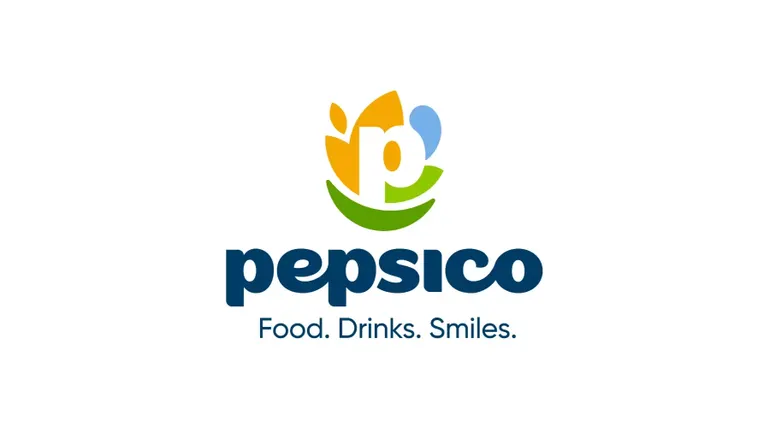- AD150
- Posts
- AI Adoption Rises, but 54% Still Fear Losing Creativity
AI Adoption Rises, but 54% Still Fear Losing Creativity
B2B marketers are embracing AI for speed and precision — but human creativity remains the ultimate edge. The future isn’t automation versus artistry; it’s how both can scale together.
Good morning, ! This week we’re tracking how B2B marketers are sharpening their craft — from AI adoption with a human touch to experimentation driving smarter growth. We look at why email KPIs are shifting toward revenue, how social media remains the top-performing channel, and why storytelling and consistency still beat volume. Across every trend, one message stands out: in 2025, clarity, testing, and trust win.
Join 50+ advertisers who reach our 400,000 executives: Start Here.
Know another marketer who’d love this? Pass it along—they’ll thank you later! Here’s the link.
AUDIENCE DATA DIVE
What’s Powering Healthcare Newsletter Performance
B2B SaaS and Media brands led the way this period, showing how clarity, credibility, and storytelling drive clicks in a high-intent environment. B2B SaaS / Productivity campaigns averaged 1.78% CTR, fueled by product-focused creatives from Attio, Rubrik, and Test Double that connect directly to readers’ professional needs. Close behind, Media / Publisher Partnerships like Pete, Delve, and 1440 Media earned 1.70% CTR, leveraging trust and tone to turn readership into engagement.
Meanwhile, Finance / Investing Media remained a steady top performer with 1.16% CTR across 23 placements, showing strong resonance with a decision-making audience. Consumer Lifestyle & Real Estate and Health & Wellness also delivered solid visibility—proof that awareness-driven campaigns still add meaningful reach.
Across every vertical, one trend stands out: ads that teach, simplify, or inspire consistently outperform. When brands deliver relevance and authenticity, engagement naturally follows. (More)
AD INTEL
Experimentation Becomes a Core Growth Engine

Marketers are leaning heavily into A/B testing as budgets tighten and campaign performance faces greater scrutiny. In 2025, over half of marketing teams (56%) say their top goal is to optimize campaigns, followed closely by enhancing user experience (54%) and improving conversion rates (53%).
The data highlights a shift toward evidence-based creativity — brands aren’t just testing visuals or headlines anymore; they’re using experimentation to validate new product features (39%) and refine messaging (30%) before scaling. Even customer retention (25%) is emerging as a testing priority, showing how experimentation is moving beyond acquisition into the full customer journey.
As marketers double down on data-led insights, testing culture is becoming a competitive differentiator. Those who can balance experimentation speed with strategic depth will be the ones driving the most efficient growth in 2025. (More)
THE FUNNEL REPORT
Email KPIs Are Shifting From Clicks to Conversions

Marketers are rethinking what success in email marketing really means. According to recent survey data, click-through rate (CTR) still leads as the top KPI (29%), followed by conversion rate (24%)—but a growing share (17%) now track revenue generated per email as their primary performance metric.
This shift signals a move away from vanity metrics toward bottom-line accountability. Instead of simply measuring opens or clicks, leading B2B teams are mapping email engagement directly to pipeline and revenue impact. Litmus data shows these marketers are 65% more likely to prioritize revenue as their “North Star” KPI—reflecting a more mature, outcome-driven funnel strategy.
The takeaway? Clicks still matter, but true performance lives in conversion and revenue attribution. The best teams are aligning email metrics with the full customer journey—not just the inbox. (More)
BUDGET SHIFTS
B2B Marketers Double Down on Digital Basics

B2B marketers are returning to digital fundamentals. According to new Ipsos data, social media dominates channel usage at 75%, far outpacing email (61%) and in-person events (51%). It’s the only non-digital format still holding a top-five spot, proof that live experiences remain relevant but secondary.
When asked which channels actually drive results, 36% of marketers name social media as their most effective platform, while in-person events (18%) and email (12%) trail behind. The takeaway? Even as budgets expand post-2024, marketers are prioritizing scalable, measurable, and digital-first strategies.
Interestingly, tech and agency sectors over-index on social compared to financial and professional services firms, suggesting a divide between innovation-driven and relationship-driven marketing models.
As 2025 budgets take shape, the data makes one thing clear: success favors those who master the digital basics, again. (More)
BUYER’S ROOM
Marketers Are Excited About AI—But Still Don’t Fully Trust It

AI may be the buzzword of the year, but most marketers are approaching it with measured caution. According to recent data, 54% cite “loss of creativity and human touch” as their biggest concern when using AI in marketing. Another 42% worry about becoming overly reliant on automation, while ethical issues around data usage (40%) and transparency in decision-making (35%) continue to raise red flags.
Even as AI tools promise better targeting and faster creative production, bias (29%) and job displacement fears (27%) remind marketers that the technology still lacks a full trust layer. The takeaway? AI adoption is advancing—but not without friction.
For now, buyers are investing in AI enablement with human oversight, not total automation. The sentiment across the industry leans toward using AI to enhance creativity, not replace it. Expect the conversation in 2025 to shift toward ethical frameworks, explainable models, and creative-human balance as marketers push to keep innovation human-centered. (More)
CREATIVE THAT CONVERTS
Solving the B2B Social Media Struggle

B2B marketers are still wrestling with one timeless challenge — reaching the right audience and keeping them engaged. According to new data, 41% cite audience targeting as their biggest hurdle, followed closely by engaging followers (37%) and generating fresh ideas (34%).
Despite advanced tools and analytics, connecting with B2B buyers requires more than precise targeting — it demands authentic storytelling and consistent value. Yet with 32% of marketers struggling to post consistently and 31% balancing content quality with quantity, even the best strategies can falter without the right creative backbone.
The takeaway? Consistency and connection beat volume. The most effective B2B advertisers are shifting from generic messaging to audience-led narratives that feel personal — not promotional. By anchoring campaigns around audience insight, creative diversity, and measurable impact, brands are turning “likes” into lasting trust.
Bottom line: In B2B, creativity isn’t just about standing out — it’s about staying relevant. (More)
CASE STUDY
How the National Pork Board Rebranded for Gen Z
How do you rebrand a product tied to one of the most iconic taglines in U.S. marketing, by making people forget it? That’s the challenge the National Pork Board faced in 2024 when it retired its decades-old “Other White Meat” identity in favor of a digital-first campaign: “Taste What Pork Can Do.”
Partnering with BarkleyOKRP, the team launched cinematic ads, social content, and influencer activations, including a Manhattan “New Pork City” bus tour hosted by chef Joshua Weissman, to show pork’s versatility beyond bacon. About half the budget went to paid media, with a focus on social-first storytelling to reach Gen Z and millennial food lovers.
The results? Pork sales rose 26% YoY by June, tracking toward one of the category’s strongest years in a decade. For the National Pork Board, the campaign didn’t just refresh a brand — it proved that even heritage organizations can thrive by meeting new audiences where they scroll, not where they shop. (More)
INTERESTING ARTICLES
To be successful, you have to have your heart in your business, and your business in your heart.
Thomas Watson, Sr.




